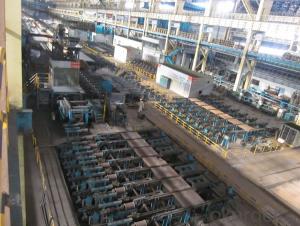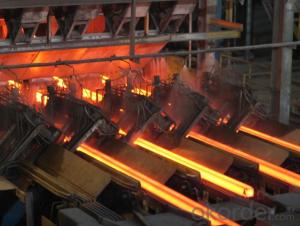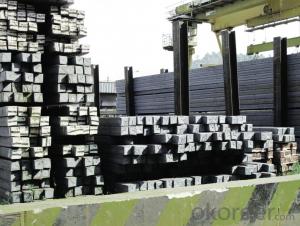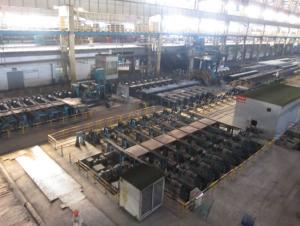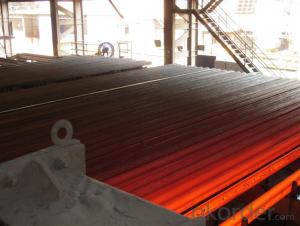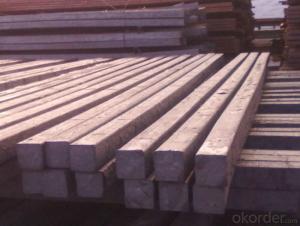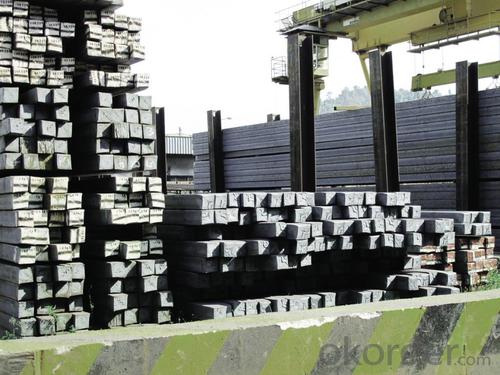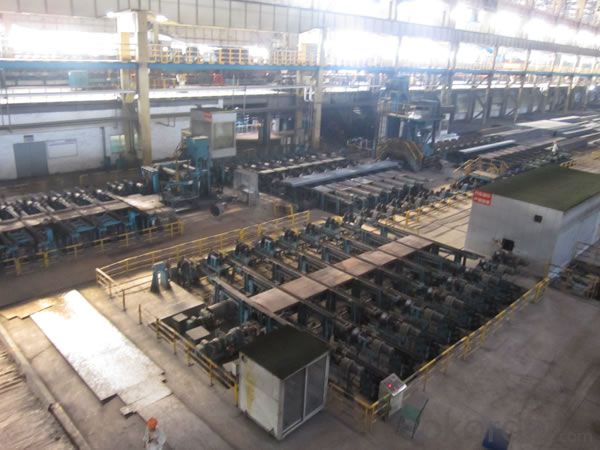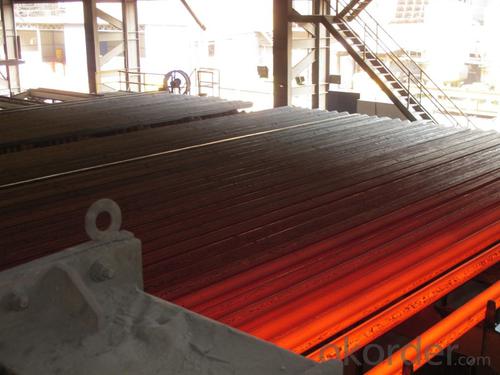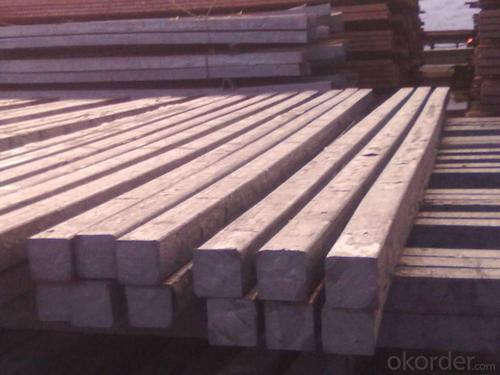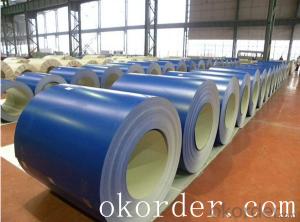Prime quality prepainted galvanized steel 680mm
- Loading Port:
- Tianjin
- Payment Terms:
- TT OR LC
- Min Order Qty:
- 100 m.t.
- Supply Capability:
- 10000 m.t./month
OKorder Service Pledge
OKorder Financial Service
You Might Also Like
Construction building material galvanized color prepainted cold
rolled steel coil
Prepainted steel sheet is coated with organic layer, which provides higher anti-corrosion property and
a longer lifespan than that of galvanized steel sheets.
The base metals for prepainted steel sheet consist of cold-rolled, HDG electro-galvanized and hot-dip
Alu-zinc coated. The finish coats of prepainted steel sheets can be classified into groups as follows:
polyester, silicon modified polyesters, polyvinylidene fluoride, high-durability polyester, etc
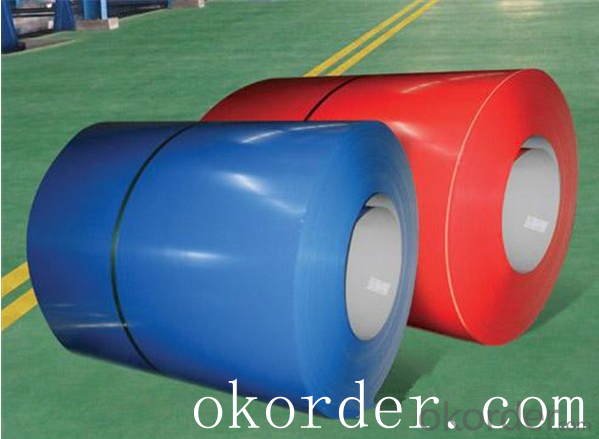
Standard and Grade :
Pre-paint galvanized steel coil | ||||
ASTM A755M-03 | EN10169:2006 | JISG 3312-2012 | ||
Commercial quality | CS | DX51D+Z | CGCC | |
Structure steel | SS GRADE 230 | S220GD+Z | CGC340 | |
SS GRADE 255 | S250GD+Z | CGC400 | ||
SS GRADE 275 | S280GD+Z | CGC440 | ||
SS GRADE 340 | S320GD+Z | CGC490 | ||
SS GRADE550 | S350GD+Z | CGC570 | ||
S550GD+Z | ||||
Application:
Outdoor | Roof, roof structure, surface sheet of balcony, frame of window, door of garage, rolled shutter door, booth, Persian blinds, cabana, etc |
Indoor | Door, isolater, frame of door, light steel structure of house, home electronic appliances, ect. |
Specifications
Commodity Name: Prepainted Galvanized Steel Coil
Standard: AISI, ASTM, DIN, GB, JIS
Grade: TDC52D+Z
Thickness 0.13-8.0mm
Width:600mm-1350mm
Zinc Coating:275g/m2
Polyester Coating Thickness:Top and Back coating thickness depend by Buyer Requirement.
Polyester Coating Type:2/2,1/2m,1/2.
Polyester Type: Polyester, silicone modified polyester, high durability polyester (HDP), polyvinylidene fluoride (PVDF)
Unit Roll Weight:5-20tons
Place of Origin Shanghai , China (Mainland)
Surface Treatment :Color Coated
Manufacture Progress:HRC-CRC-GALVANIZED-COLOR COATED
Application : Construction, electrical, transportation, steel plant, composite board plant, steel tile factory
Payment & Shipping Terms:T/T ,L/C, and FOB CHINA
Minimum Order Quantity: 25Tons
Packge Type: Moisture-proof paper inner,Steel outside,Bundle by steel rope.
Package in Container : Wood as a foot pad, wire rope reinforcement,PPGI steel coil tied together by steel rope.
- Q: How do steel billets contribute to the overall thermal insulation of a structure?
- Steel billets do not contribute directly to the overall thermal insulation of a structure. Thermal insulation is primarily achieved through the use of materials with low thermal conductivity, such as insulation boards or panels made from materials like fiberglass, foam, or mineral wool. Steel billets, on the other hand, are typically used as a raw material in the construction industry for various applications, such as the production of steel beams, columns, and other structural components. These components, when properly integrated into a building's structure, can indirectly contribute to the overall thermal insulation of a structure. For instance, steel beams and columns can help support and distribute the load of insulation materials, ensuring they remain in place and perform their insulating function effectively. Additionally, steel components can be designed to minimize thermal bridging, which is the transfer of heat between materials with different thermal conductivities. By reducing thermal bridging, steel components can help maintain a more uniform temperature throughout the structure and prevent heat loss or gain at these junctions. However, it is important to note that the primary role of steel billets in a structure is not thermal insulation. Instead, they provide structural stability, durability, and strength to the building. To achieve optimal thermal insulation, additional materials and construction techniques specifically designed for insulation purposes should be used in conjunction with steel components.
- Q: How are steel billets used in the manufacturing of construction equipment?
- The production of construction equipment heavily relies on steel billets, which are indispensable. These semi-finished steel products serve as the primary material for manufacturing different components and structures used in construction machinery. One of the key applications of steel billets in construction equipment manufacturing is in the forging and casting processes. These billets are subjected to high temperatures and then shaped and sized according to the specific requirements of the machinery being produced. Commonly manufactured components using this method include gears, connecting rods, axle shafts, and hydraulic cylinders. Additionally, steel billets find use in creating structural components for construction equipment. Through hot rolling or cold drawing processes, these billets are transformed into beams, columns, and plates. These structural components provide the necessary strength and stability to ensure durability and long-lasting performance. Moreover, steel billets are crucial in fabricating frames and chassis for construction machinery. By cutting, shaping, and welding the billets together, a sturdy and robust framework is formed, serving as the backbone of the equipment. This framework provides structural integrity, support, and rigidity to withstand heavy loads, vibrations, and harsh working conditions. Furthermore, steel billets are employed in the creation of other essential parts of construction equipment, including buckets, blades, cutting edges, and tracks. These parts are vital for the efficient operation of machinery such as excavators, bulldozers, cranes, and loaders. In summary, the significance of steel billets in the manufacturing of construction equipment cannot be overstated. They provide the necessary raw material for forging, casting, and fabricating various components and structures. The use of high-quality steel billets ensures that construction equipment possesses the required strength, durability, and resilience to perform optimally in demanding construction environments.
- Q: Can steel billets be used for decorative purposes?
- Indeed, steel billets have the potential to serve as decorative elements. Steel billets act as the primary material utilized in an array of applications within the steel industry, including the creation of ornamental goods. Through the implementation of diverse techniques like forging, casting, or machining, steel billets can undergo a metamorphosis into visually pleasing decorative pieces, such as sculptures, ornamental gates, furniture, architectural components, and more. Steel's adaptability and longevity make it a favored choice for decorative purposes, as it can be molded into intricate designs and endure outdoor conditions. Furthermore, steel can be further enhanced with a variety of finishes, like painting, powder coating, or patina, to heighten its visual allure and complement a wide range of styles or aesthetics.
- Q: What are the different methods of steel billet surface etching?
- There are several different methods of steel billet surface etching that are commonly used in various industries. These methods include chemical etching, electrolytic etching, and laser etching. 1. Chemical etching: This method involves immersing the steel billet in a chemical solution, usually an acid, that selectively removes a thin layer of material from the surface. The choice of the chemical solution depends on the specific requirements of the etching process, such as the desired depth and pattern. Commonly used chemicals for steel etching include hydrochloric acid, nitric acid, and ferric chloride. 2. Electrolytic etching: In this method, an electric current is passed through the steel billet while it is immersed in an electrolyte solution. The current causes a controlled dissolution of the surface metal, resulting in a desired etched pattern. Electrolytic etching offers precise control over the etching process and can produce intricate and detailed designs. It is often used for marking or labeling steel billets with logos, serial numbers, or other identification marks. 3. Laser etching: Laser etching is a non-contact and highly precise method of surface etching. It involves using a laser beam to selectively remove material from the steel billet surface. The laser beam is directed and controlled by computer software, allowing for intricate and customizable designs. Laser etching can be used to create permanent markings, logos, or patterns on steel billets. It is widely used in industries such as automotive, aerospace, and electronics. Each of these methods has its advantages and limitations, and the choice of the etching method depends on factors such as the desired design, the material properties of the steel billet, and the production requirements.
- Q: What is the global production capacity of steel billets?
- Accurately estimating the global production capacity of steel billets proves challenging due to its annual fluctuations and susceptibility to factors like market demand, economic conditions, and technological advancements. Nonetheless, the World Steel Association reports that in 2019, the total global production capacity for steel billets stood at around 1.86 billion metric tons. This capacity is distributed among different countries and steel-producing regions, with China leading as the largest producer, trailed by India, Japan, and the United States. It is crucial to acknowledge that these statistics are subject to alteration as the steel industry evolves and grows.
- Q: How are steel billets used in the production of seamless tubes?
- Steel billets are used in the production of seamless tubes as they serve as the raw material for the manufacturing process. These billets are heated and pierced to create a hollow tube shape, which is then elongated and shaped to the desired dimensions. The high-quality and consistent properties of steel billets ensure seamless tubes with excellent strength, durability, and resistance to corrosion, making them suitable for various industries such as construction, automotive, and oil and gas.
- Q: Are steel billets used in the production of electrical transmission towers?
- The utilization of steel billets is widespread in the manufacturing of electrical transmission towers. At the onset of the production process, steel billets serve as the primary form of steel. They are typically shaped and sized through hot rolling, resulting in various sections and components required for constructing transmission towers. Due to its remarkable strength and durability, steel emerges as the perfect material for such structures, which must endure harsh environmental conditions and uphold heavy electrical conductors. Additionally, steel possesses exceptional electrical conductivity properties, a vital characteristic for ensuring the efficient transmission of electricity through the towers. In summary, steel billets assume a pivotal role in the creation of electrical transmission towers, guaranteeing their strength, durability, and efficiency.
- Q: Our caster is square billet! 150X500! That is, every time we open the head, there is slag inclusion. And pores! Yes, the first 3 meters! There's no more left behind! How did it happen, please?! We have a refinery and electromagnetic stirring! Give me a hand!
- the only way to avoid pinhole of slag situation.1, after foaming, a large amount of gas and residue are produced, which is the main source of porosity and slag inclusion in the cast steel.2, steel casting pouring system or ingate structure is not reasonable, easy to make the gas and residue involved in the liquid metal, the formation of porosity and slag.3, pouring temperature is too low, can not make the cast steel parts of the gas and residue fully excluded, floating up to the top of the casting, but also easy to produce porosity and slag inclusion.4, in some parts of the cast steel parts, when the permeability of the paint is very low, due to the role of gas back pressure, it is easy to make the gasification gas wrapped in the epidermis, forming a package of gas".
- Q: How do steel billets contribute to the overall weight reduction of a product?
- Steel billets contribute to the overall weight reduction of a product through several key factors. Firstly, steel billets are formed through a process of hot rolling or continuous casting, which allows for precise control over the dimensions and shape of the final product. This enables manufacturers to produce steel billets with a high strength-to-weight ratio, meaning that they offer excellent structural integrity while being relatively lightweight. Additionally, steel billets can be further processed and shaped into various components of a product, such as sheets, plates, or bars. These components can be designed and optimized to have thinner cross-sections or hollow sections, reducing the weight without compromising the overall strength and performance of the product. This weight reduction is highly beneficial, especially in industries where lightweight materials are desirable, such as automotive, aerospace, or construction. Furthermore, steel billets can also be used in the production of advanced high-strength steels (AHSS) or ultra-high-strength steels (UHSS). These steels possess exceptional mechanical properties, including high tensile strength and improved formability, allowing manufacturers to use thinner gauges of steel without sacrificing durability. This, in turn, leads to a significant reduction in weight while maintaining the necessary structural integrity. In conclusion, steel billets contribute to the overall weight reduction of a product by providing a lightweight yet strong material for manufacturing. Their ability to be shaped into various components, combined with advancements in steel technology, allows for the production of lightweight products without compromising strength or performance.
- Q: What are the common surface defects found in steel billets?
- Some common surface defects found in steel billets are scale, cracks, laps, seams, and surface decarburization.
Send your message to us
Prime quality prepainted galvanized steel 680mm
- Loading Port:
- Tianjin
- Payment Terms:
- TT OR LC
- Min Order Qty:
- 100 m.t.
- Supply Capability:
- 10000 m.t./month
OKorder Service Pledge
OKorder Financial Service
Similar products
Hot products
Hot Searches
Related keywords
